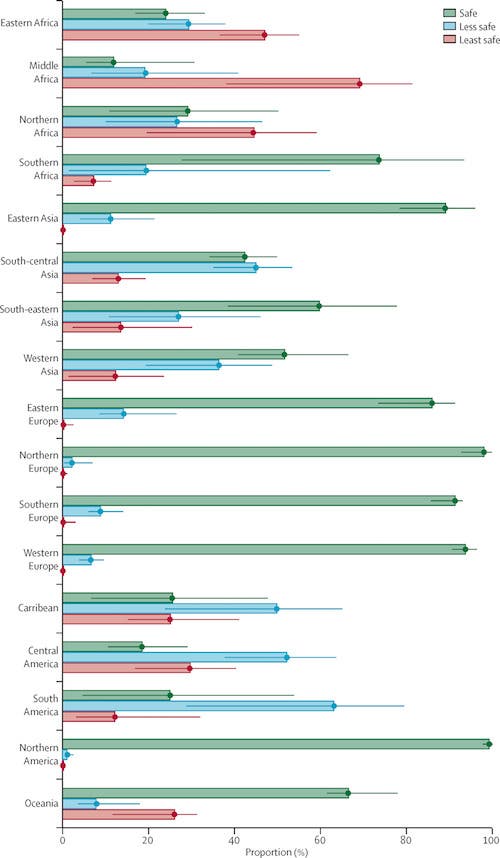Almost one in two abortions in the world take place unsafely, according to researchers at the World Health Organization (WHO). Of the 56 million yearly abortions carried out worldwide, the least safe procedures took place in countries with restrictive abortion laws. In the 62 countries where abortion is banned or only allowed to save a woman’s life, only 25.2% of abortions were deemed safe, compared to 87.4% of abortions in the 57 countries where abortion is legally available on request.
There is evidence that suggests that the practice of abortion was carried out since antiquity. For instance, abortion was accepted in both ancient Rome and Greece. Through much of Western history abortion was not criminal if it was carried out before ‘quickening’; that is before the fetus moved in the womb at between 18 and 20 weeks into the pregnancy. But then, in 1803, Britain passed the first antiabortion laws, which then became stricter throughout the century. The U.S. followed as individual states began to outlaw abortion and by 1880, most abortions were illegal in the nation, except those “necessary to save the life of the woman.” Then, as now, making abortion illegal neither eliminated the need for abortion nor prevented its practice. In the 1890s, doctors estimated that there were two million abortions a year in the U.S. (compared with roughly one and a half million today for a much bigger population).
At this point, it’s worth mentioning that the abortions of the time represented a dangerous procedure done with crude methods, few antiseptics, and high mortality rates. Today, however, an abortion at the primary care level is deemed as a routine procedure with little to any risks to women. This is why these most recent findings are so surprising and depressing.
Despite being common practice and safe in the Western world, researchers estimate 17.1 million (30.7%) abortions were less safe and 8 million (14.4%) were least safe. Overall there were 55.7 million abortions that occurred worldwide each year between 2010–2014. Researchers estimated these numbers using empirical data on abortions, methods, providers, settings and factors that affected safety within a Bayesian hierarchical model.
Abortions were classed as less safe if only one of two criteria were met. Specifically either the abortion was done by a trained provider but with an outdated method or a safe abortion method but without adequate care from a trained individual. The least safe abortions were those performed by an untrained individual using dangerous methods like ingesting caustic substances, inserting foreign bodies or traditional concoctions.
Some key findings from the study:
- About 25.1 million abortions were performed in unsafe circumstances each year, of which 24.3 million (97%) took place in developing countries;
- Income counts. Most abortions in upper-middle-income countries (67.1%) and high-income countries (82.2%) were safe compared to 1 in 5 abortions (21.8%) in low-income countries.
- Besides southern Africa, the proportion of safe abortions was 25% or less in all of Africa and Latin America;
- Most unsafe abortions were categorized as less safe in Latin America whereas in Africa almost all unsafe abortions were categorized as least safe.
- Eastern Asia had a safety distribution similar to that of developed countries;
Overall, the study found a strong correlation between safe abortions and less restrictive laws. Together, these two factors work together to enhance safety by enabling an environment for trained providers and improved access to safe methods. What’s striking is that the regions with the highest proportion of safe abortions (northern Europe and northern America) also showed the lowest incidence of abortion. Both men and women have better access to contraception and live in regions with a higher economic development, higher levels of gender equality and well-developed health infrastructures,
The WHO researchers are careful to note that an important factor that promotes unsafe abortions is stigma. Seeking not to draw attention, many women, particularly in developing nations, will turn to unauthorized individuals who may employ dangerous abortion methods.
“Stigma remains a major barrier to safe services also in countries with legal abortion. In future estimates, influence on stigma and refusal to provide services should be further addressed,” wrote Kristina Gemzell-Danielsson, MD, PhD, of the Karolinska Institutet.
Scientific reference: “Global, regional, and subregional classification of abortions by safety, 2010–14: estimates from a Bayesian hierarchical model”, 2017, The Lancet.











